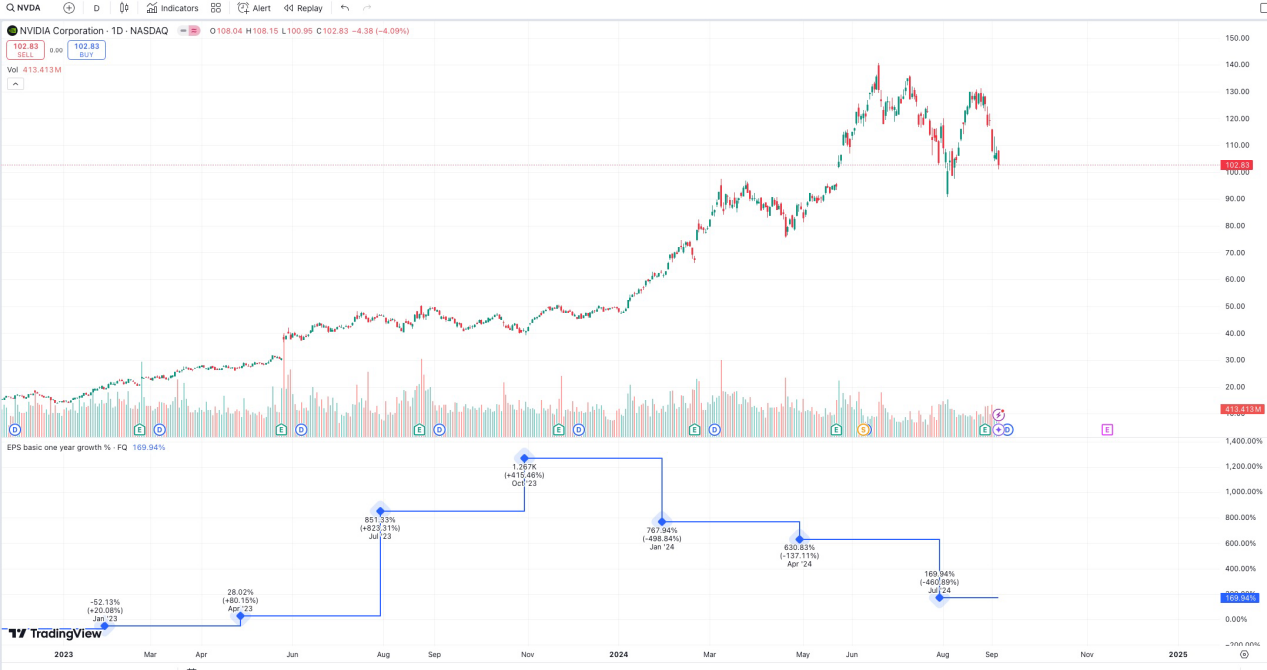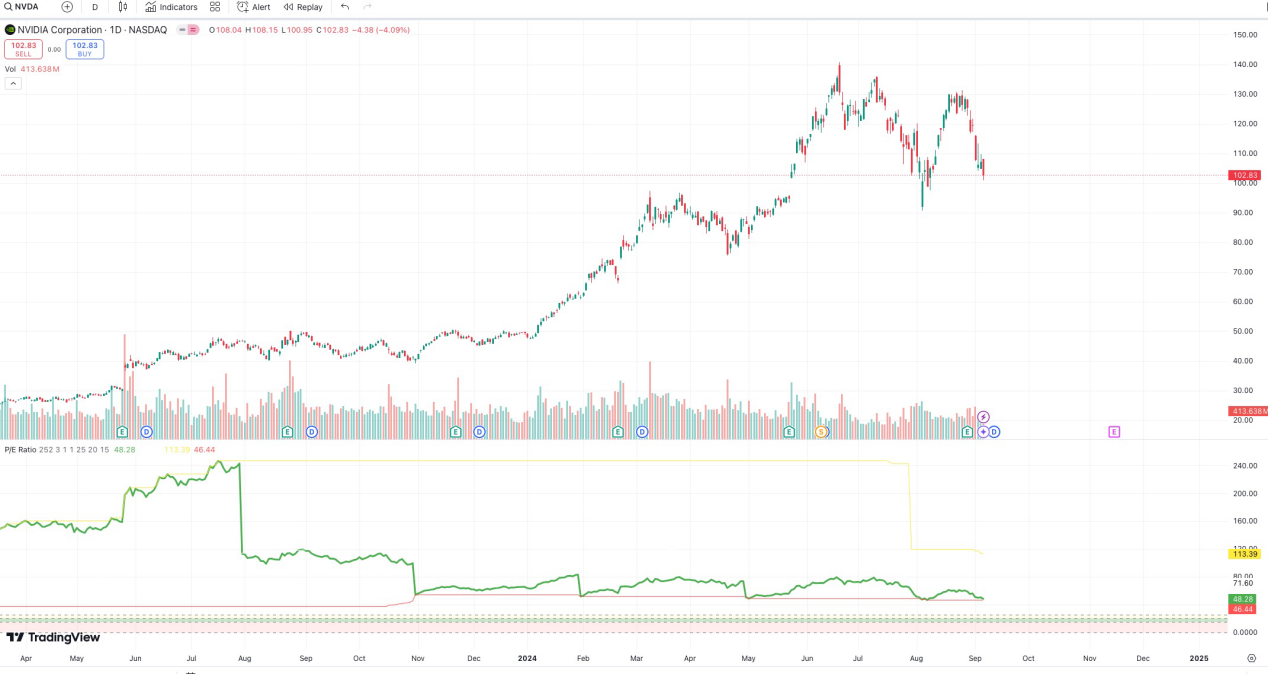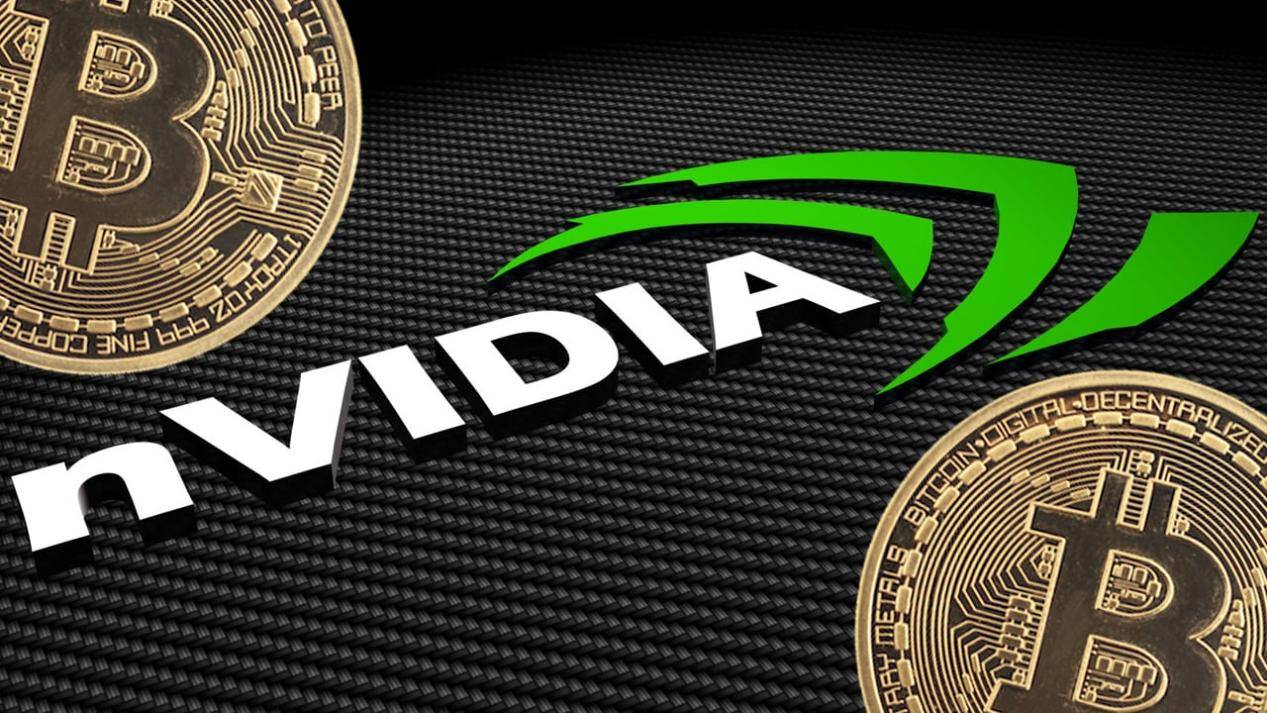As the core driving force of this bull market, Nvidia has started to kill valuation, and as a result, capital has accelerated its deleveraging in the technology stock sector to avoid risks.
Author: @Web3Mario
Abstract: Last week, the risk asset markets all faced certain pressure, especially on Friday, after the release of key data such as the US August non-farm payrolls and unemployment rate, there was a significant retreat. However, from the data, although it did not meet expectations, it was not particularly bad. Therefore, it is necessary to dissect this price trend to see what exactly happened. Therefore, the author summarized some relevant logic over the weekend and shared some insights with everyone. Overall, the core reason for this round of decline, on the surface, is the "rebound of US non-farm payrolls below expectations," which to some extent has triggered market concerns about a US recession. Essentially, it is accompanied by the release of Nvidia's second-quarter financial report, showing a slowdown in performance growth. Nvidia, as the core driving force of this bull market, has started to kill valuation, and as a result, capital has accelerated its deleveraging in the technology stock sector to avoid risks.
US non-farm data, although below expectations, is not particularly bad
First, let's take a brief look at the changes in the non-farm employment and unemployment rate data that led to the decline in the cryptocurrency market last Friday. The US added 142,000 new jobs in August, higher than the 89,000 in July. This indicates an improvement in the job market, but it still falls short of the expected 165,000. The unemployment rate also saw a slight decline, dropping from 4.3% in July to 4.2%. This is also in line with market expectations.

I have previously analyzed that this data can actually be observed in advance through changes in the initial claims for unemployment benefits at the beginning of the week. In August, both the initial claims and the continued claims showed a downward trend, indicating a good recovery in the job market. Therefore, I personally maintain a wait-and-see attitude towards the sharp decline in the cryptocurrency market, which is probably a feedback to the deleveraging cycle as a trigger.

So why did such a seemingly not particularly bad data trigger drastic fluctuations in the cryptocurrency market? I believe the fundamental reason lies in the deleveraging operation triggered by the accelerated slowdown in Nvidia's Q2 financial report.
Continued slowdown in earnings growth cannot meet capital's expectations, Nvidia starts killing valuation, and technology sector deleveraging accelerates
It can be said that the core driving force of this bull market is the growth of the AI sector represented by Nvidia. On August 29, the 2024 Q2 financial report was released, showing a continued growth trend, but it triggered market selling. The core reason is the accelerated decline in EPS growth rate, which caused panic, and the market began to kill valuation. Here, let me briefly explain the logic behind this. Usually, a stock's price is a reflection of the market's valuation of the company, evaluating the value of the asset through various financial data, forecasts, and market information. The core goal of stock valuation is to judge whether a company is worth investing in and whether the price matches its potential earning ability or asset condition. One of the most basic valuation methods is to calculate the price-to-earnings ratio (P/E Ratio) and compare it with the average level of the company's industry, in order to judge whether the current stock price is overvalued or undervalued. The calculation method of the price-to-earnings ratio is to divide the stock price by the earnings per share (EPS), as the core value of the stock is the right to dividends.
In fact, this value can also be understood as the number of years it takes to recoup the investment in a stock based solely on the company's dividends. Usually, the market will give a higher price-to-earnings ratio standard to the technology industry due to its high growth characteristics, which is easily understandable because the market believes that with continuous realization of high growth, the company's dividend growth will become faster and faster. Therefore, this premium for future growth will be reflected in the market's tolerance for high stock prices.
After understanding this background, let's look at what issues Nvidia's financial report reflects. In essence, it is the accelerated decline in EPS that has raised concerns in the market about overvaluation. From this chart, we can clearly see the impact. The upper part shows Nvidia's stock price, and the lower part shows the year-on-year growth rate of EPS, showing a significant decline in EPS growth rate in the second quarter compared to the first quarter, and the downward trend is intensifying.

Recall that over the past six months, there has been widespread discussion in the market about whether Nvidia's stock price is overvalued, and there have been price fluctuations every time the quarterly financial report is released. However, each time Nvidia has broken the market's doubts with impressive growth data, allowing the price-to-earnings ratio to return. This has given the market a certain inertia of thinking, even though its market value has once reached the top position, this high growth expectation still remains. Of course, this is also related to the fact that most industries are under considerable pressure due to the current restrictive interest rates. Therefore, such a growth performance seems to have gained favor from capital, and capital's choice to huddle together to resist the high interest rate environment is related. However, this time's growth performance seems unable to meet the continuously reinforced expectations of capital, and has not brought the P/E ratio back to the seemingly reasonable range of around 46, which means that the stock price seems to be overvalued, so the market has started to kill valuation. Therefore, after the market fully digested the information from the financial report on August 29, Nvidia's stock price quickly fell after the US Labor Day on September 3, adjusting the P/E ratio to around 46. However, whether there will be further decline in the future depends on the outlook given by various institutions. At present, it seems that the attitudes of all parties are still relatively optimistic, and there is no further bearish information.

In previous articles, I have mentioned the Japanese yen as a source of cheap funds in the entire high-interest environment, as well as the relationship between the Japanese semiconductor industry and Nvidia. Therefore, in the process of pushing up Nvidia's stock price, the yen is the core source of leveraged funds, and with the unfolding of the killing of valuation, we can see that despite the repeated soothing by the Bank of Japan, the market has in fact once again started deleveraging to avoid risks. Starting from September 3, the USD/JPY exchange rate quickly dropped from 147 to 142, challenging the pressure level of 140 at the beginning of the year.

The rapid appreciation of the yen has further raised the cost of leveraged funds, which will further squeeze the profits of arbitrage operations, and this will further stimulate deleveraging operations. Therefore, we need to be vigilant about the negative feedback risks brought about by this.
免责声明:本文章仅代表作者个人观点,不代表本平台的立场和观点。本文章仅供信息分享,不构成对任何人的任何投资建议。用户与作者之间的任何争议,与本平台无关。如网页中刊载的文章或图片涉及侵权,请提供相关的权利证明和身份证明发送邮件到support@aicoin.com,本平台相关工作人员将会进行核查。




